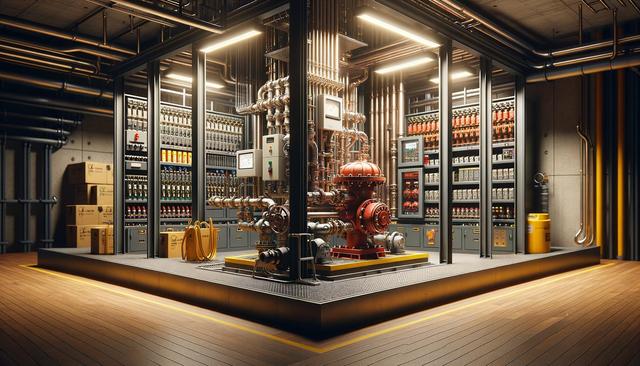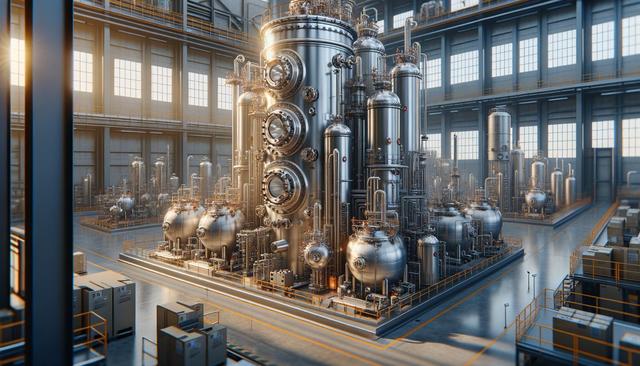
Fire Pump Room Sprinkler Protection: Systems, Standards, and Installation Costs
Understanding Fire Pump Room Sprinkler Protection
Fire pump rooms are critical components of a building’s fire protection infrastructure. These rooms house the fire pumps that ensure adequate water pressure and flow rate to sprinkler and standpipe systems during emergencies. Given their importance, sprinkler protection inside fire pump rooms is essential to safeguard the equipment from fire damage and to maintain system integrity. Sprinklers in these rooms must be designed to activate quickly and suppress any fire that may originate or enter the space. The protection systems installed here are not just about compliance—they are central to the reliability of an entire building’s fire defense.
Sprinkler systems in fire pump rooms typically include wet pipe, dry pipe, or pre-action systems, depending on the room’s environment and potential freezing conditions. The selection of the system type often depends on factors such as temperature control, building use, and water supply reliability. These systems are usually connected to the main fire protection network and are monitored for performance and readiness. A well-designed system ensures minimal downtime and optimal response during emergencies.
Applicable Standards and Compliance Requirements
Fire pump room sprinkler protection must meet specific codes and standards to ensure safety and functional reliability. The most widely recognized guidelines are provided by the National Fire Protection Association (NFPA), particularly NFPA 20, which sets the standard for the installation of stationary fire pumps. In addition, NFPA 13 governs the design and installation of sprinkler systems and includes requirements for protecting fire pump rooms.
Key standards include:
- NFPA 20: Requires fire pump rooms to be protected by automatic sprinklers if the building is sprinklered.
- NFPA 13: Details system design, installation parameters, and spacing requirements for sprinklers in fire pump rooms.
- Local codes: Municipal or state regulations may introduce additional requirements or interpretations of national standards.
Ensuring compliance with these standards is not only crucial for safety but also a requirement for insurance and occupancy permits. During installation or renovation, coordination with local fire authorities and code officials is recommended to verify all regulatory conditions are met.
Types of Sprinkler Systems for Fire Pump Rooms
Various sprinkler system configurations can be used to protect fire pump rooms, each suited for different building layouts and environmental conditions. Choosing the correct type ensures effective operation and long-term system reliability. The most common systems include:
- Wet Pipe Systems: These are filled with water and are the most straightforward to install and maintain, suitable for heated environments.
- Dry Pipe Systems: Filled with pressurized air or nitrogen, they are ideal for areas susceptible to freezing.
- Pre-Action Systems: These systems require a detection signal before water is released, offering added protection against accidental discharge.
Each system type has specific installation and maintenance requirements. For example, dry and pre-action systems necessitate air compressors or detection systems, adding to the overall complexity. Installation should consider room layout, equipment sensitivity, and potential hazards within the pump room, such as flammable liquids or electrical panels.
Installation Process and Considerations
Installing a sprinkler system in a fire pump room requires careful planning and coordination between fire protection engineers, contractors, and facility managers. The process typically begins with a detailed assessment of the room’s dimensions, equipment layout, and existing fire protection infrastructure. A hydraulic calculation is conducted to ensure that the system can deliver adequate water pressure and flow to suppress a fire effectively.
Key installation steps include:
- Evaluating the fire pump room for environmental conditions and risk factors
- Selecting the appropriate sprinkler system type based on room conditions
- Designing the layout to ensure full coverage, including around obstructions
- Coordinating with building systems, such as alarms and ventilation
- Conducting system testing and commissioning to verify functionality
It is also important to schedule regular inspections and maintenance post-installation. This ensures that components like valves, sprinkler heads, and control panels remain in working condition and are free from obstructions or corrosion.
Cost Factors and Budgeting
The cost of installing a sprinkler system in a fire pump room varies based on several key factors. These include the type of sprinkler system selected, the size and complexity of the room, the need for additional components like detection systems, and local labor rates. On average, costs can range from a few thousand dollars for basic installations to significantly more for complex or large-scale configurations.
Typical cost considerations include:
- Design and engineering fees
- Sprinkler system components (pipes, valves, heads, etc.)
- Labor for installation and commissioning
- Testing and certification costs
- Ongoing maintenance and inspection
Budgeting should also account for potential modifications to existing infrastructure, such as adjustments to piping or the addition of new water supply lines. For property managers and building owners, investing in proper sprinkler protection for fire pump rooms not only ensures compliance but can also reduce long-term liability and insurance premiums.
Conclusion: Ensuring Long-Term Protection and Compliance
Sprinkler protection in fire pump rooms is a critical aspect of any building’s fire protection strategy. By understanding the types of systems available, adhering to established standards, and carefully managing installation and costs, facility stakeholders can ensure this essential space remains secure. Whether planning new construction or retrofitting an existing facility, engaging qualified professionals and staying informed about code requirements are fundamental steps toward reliable fire safety. Investing in these systems helps protect vital equipment and supports the overall resilience of the building’s fire suppression infrastructure.


